The Byzantine church of Panaghia Vlacherna undoubtedly is one of the most important Byzantine monuments of Arta. The church, which was the former catholicon of a dominant monastery, is situated in the Vlacherna Village at the municipality of Arta and operates as its parish church.
The Church of Panaghia was founded in 1000 (end of the 9th / beginning of the 10th century) and functioned at the beginning, probably in the 11th century, as a male monastic house. Between 1228 to 1232, Panaghia Vlacherna converted to a nunnery with the actions of the “state Komnene” Maria, wife of Theodoros Komnenos Doukas. Women from the aristocratic society of the Despotate were consecrated in the Monastery, which was the first active nunnery in the Despotate of Epirus. This reason was the main reason for the care of the royal house for its promotion and decoration with the best that could be available at that time.
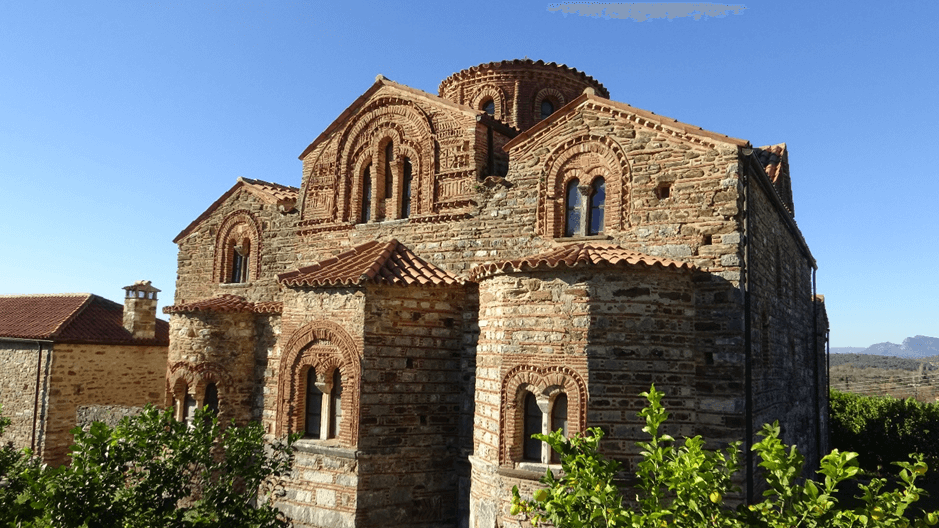
Panaghia Vlacherna was founded as an arched basilica and was renovated in the 13th century. In its contemporary form, the church belongs to the type of vaulted domed basilica with a narthex of equal width, vaulted too. The church, up until 1814, was dedicated to the Assumption of Theotokos. However, since 1814 glorifies the Recovery of the Holy Dress of the Virgin and celebrates on the 2nd of July every year.
The Virgin of Vlacherna (Vlachernitissa or Vlacherna or Vlachiorina as it is called by the locals) derived this name in honor of the famous Blachernae church of Constantinople, of which it is a copy. The Palace of Vlachernon was the residence of the Byzantine Emperors on the outskirts of the Vlacherna, in the northwestern part of Constantinople.
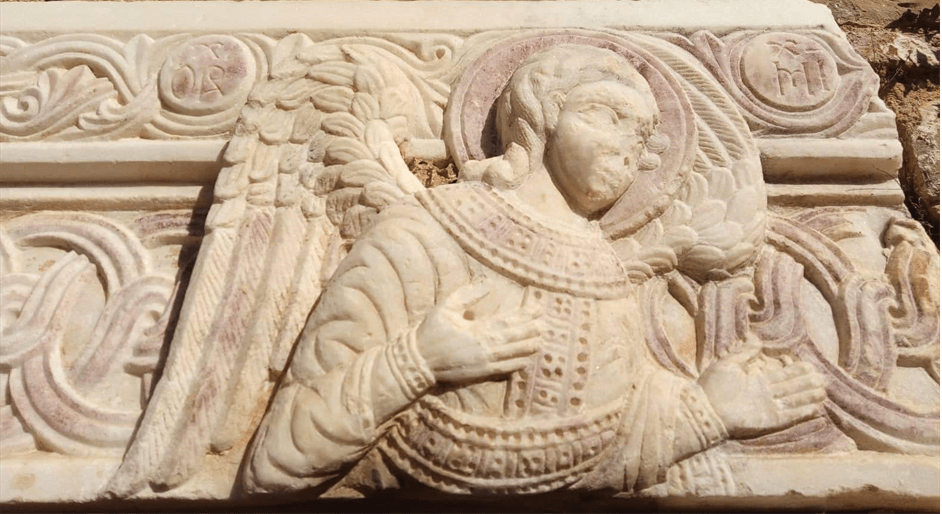
Of great interest is the marble iconostasis of Vlacherna, which is not preserved in its original position, as it was destroyed during the Ottoman period and parts of it have been incorporated into the masonry of the entrances of the narthex or were found scattered in other monuments of Arta. The current iconostasis of the church is a later wood carving of the 17th century. A typical example of this is the left part of the entablature in the form of the Archangel Michael, which is built into the south entrance of the narthex. He is turned to the right with his hands in front of a prayer posture, while his clothing and features have been rendered with great delicacy.
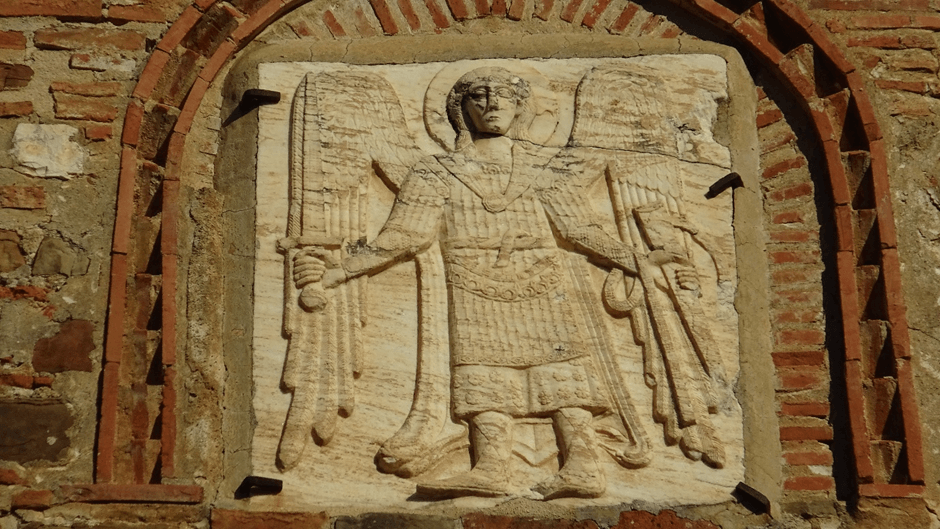
The frescoes of the monastery of Vlacherna have been dated, those of the main church in its final configuration around the middle of the 13th century (first painting phase: around 1250) and those of the late narthex around the end of the same century, shortly after 1284 (second painting phase) and are ranked among the most important decorations- in the most important monumental paintings of the 13th century in the state of Epirus and, more broadly in Greece.
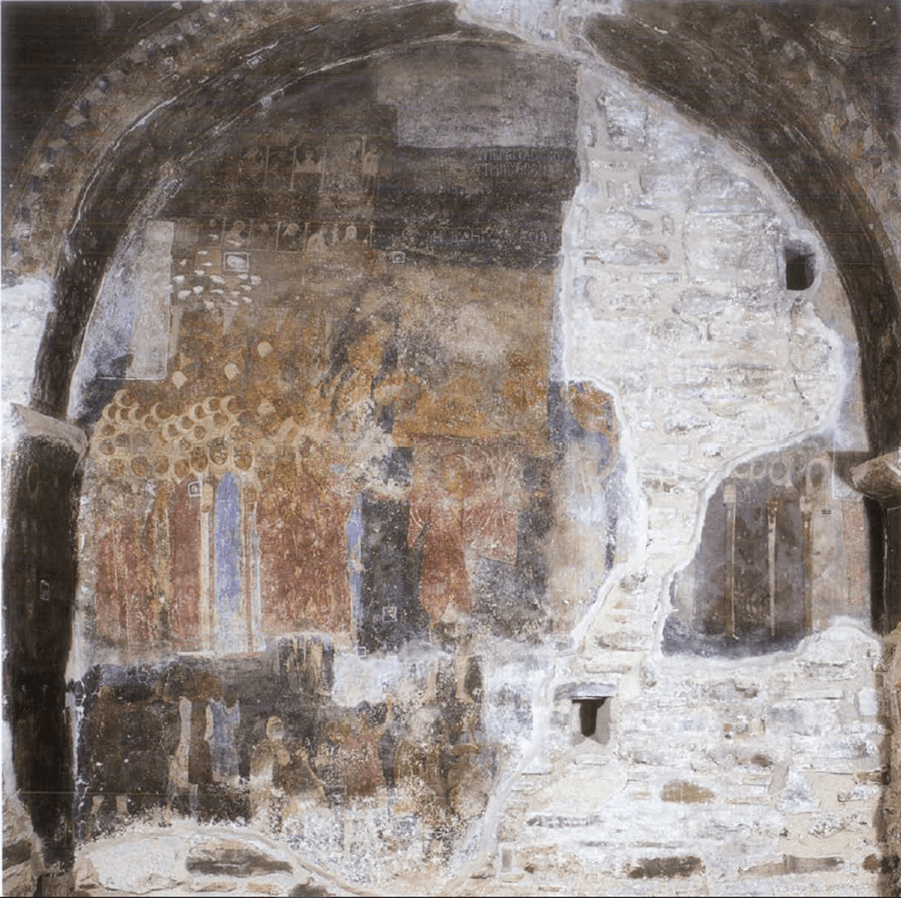
In the South arch of the west side of the Narthex is depicted the most important fresco of the Temple of Vlacherna, the Litany of the icon of the Virgin of Hodegetria. Valuable elements of the composition have been lost and the rest are preserved in moderate to poor condition. The importance of the mural is mainly due to the fact that the story of the theme “of the Litany of the image of the Virgin Hodegetria, which took place every Tuesday in Constantinople, is utterly unique in the Byzantine monumental painting. This monumental mural has no precedent or next in the relevant Byzantine representations in terms of the specific elements and the iconographic richness of the subject, but also in terms of the detailed and plausible description of the events. The unprecedented precision in the rendering of the graphic details of the festival certifies if not the origin of the artist, at least the direct experience of the celebration of the festival. The litany of the image had been established by Empress Poulcheria.
The central topic of the synthesis depicts the icon of Panaghia Hodegetria, which a faithful man carries in his hands. Clergymen and deacons frame the picture. In the three-story building, located to the right of the icon, women worship the Virgin Mary. Around the icon, women holding lanterns accompany the procession. Three women stand out invaluable costumes, which show that they are of aristocratic origin. According to Acheimastou-Potamianou, these women correspond to Irene-Eulogia, who was imprisoned as an opponent by her brother, Emperor Michael VIII Palaiologos, in an attempt to unite the two Churches. Irene-Eulogia and her two daughters, Anna Kantakouzene-Palaiologina, the Queen of Arta, and her sister Theodora Raoulaina, celebrate the release of their mother, when Andronikos II Palaiologos, son of Michael, ascended the Throne and restored ecclesiastical peace. The painter of the composition, probably, aimed to immortalize the participation of Queen Anna in the historical events. Concurrently, young people drink and buy from a seller a container with a kind of drink. A seller of caviar and a vegetable seller, both provide in detail the image of the fest and the marketplace.
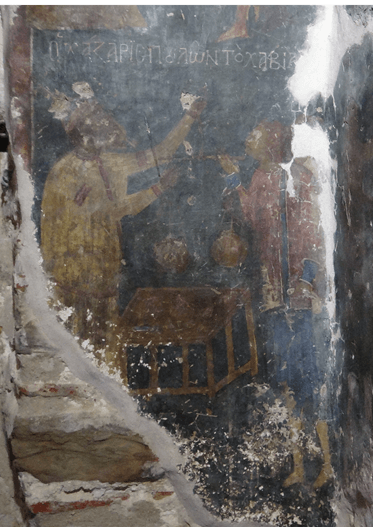
Panaghia Vlacherna in Arta was built opposite the deserted palace of the Komnenos dynasty and functioned as a burial temple of the family of Komnenodoukas, rulers of the Despotate of Epirus. In the Church of Vlacherna, there are two above-ground tombs, adjacent to its north and south wall. In those carnivores, probably are buried members of the Komnenodoukas family. The historical background, the architecture, the brickwork ornamentation, the carnivores, the wall paintings of the Panaghia Vlacherna, and the tranquility of the surrounding area compose a place, that every visitor will admire.

